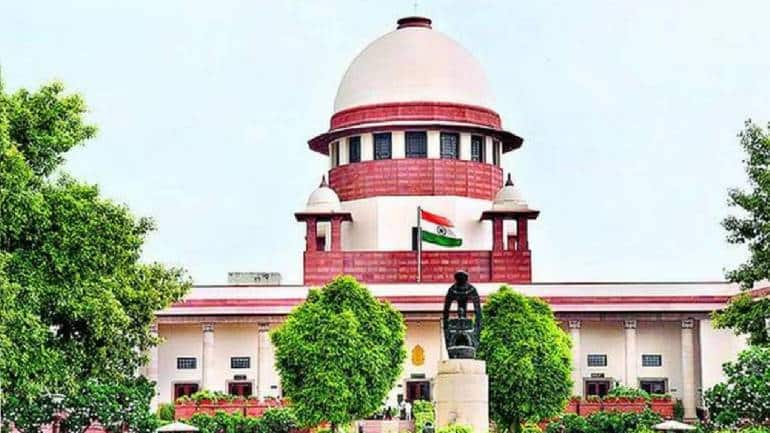
ARTICLE 39 (B) AND ITS LIKELY BEARING ON THE WEALTH REDISTRIBUTION DEBATE
A nine-judge bench of the Supreme Court on April 23 commenced the hearing of a bunch of decades-old petitions that raise the question on the scope of the words ‘material resources of the community’.
The court has set out to decide whether these words used in Article 39 (b) of the Constitution also includes private property. The article asks states to frame policies towards securing material resources of the community so that they are distributed to serve the ‘common good’. The court is now hearing the case to decide whether ‘material resources of the community’ includes private property.
However, Article 39 does not feature in the Fundamental Rights section of the Constitution, it features in the Directive Principles of State Policy (DPSP), which are not enforceable in a court of law. They are merely aspirational directives asking the government in power to implement certain laws, and are also guiding principles to the government while making laws.
The hearing comes close on the heels of Congress leader Rahul Gandhi promising to conduct a nationwide survey, if voted to power, to ensure that money is distributed to various sections of the society as per their population.
Moneycontrol explains what the case is about, how it reached the Supreme Court and what was held on this provision of law before this.
What is the case about?
The case reached the Supreme Court through the Bombay High Court when a bunch of petitions were filed challenging a particular provision of the Maharashtra Housing and Area Development Act, 1976. Section 103 B of the act, which was introduced in 1986 empowered the government to take over old buildings with the consent of 70 percent of its owners for restoration and redevelopment. These old buildings are called ‘cessed properties’.
According to the main petitioner, the Property Owners Associate (POA), the law gives enormous powers to the government to take over anybody’s property in the name of restoration, thus violating their Fundamental Rights. The Maharashtra government however defended their stance by citing Article 39 (b). The Bombay High court junked these petitions on the ground of Article 31 C.
Article 31 C is a ‘safe harbour provision’, which says “no law giving effect to the policy of the State towards securing all or any of the principles laid down in Part IV (Directive Principles of State Policy) shall be deemed to be void on the ground that it is inconsistent with, or takes away or abridges any of the rights conferred by Article 14 or Article 19.” That is, a law advancing the cause of DPSP cannot be struck down for violation of certain Fundamental Rights. Furthermore, the Right to Property was not a Fundamental Right under the Constitution - thus the case stood the Bombay HC test in 1991.
In 1992, the case of POA reached the Supreme Court as they challenged the Bombay HC judgment. In March 2001, nearly a decade after the case was filed, a five-judge bench of the apex court referred the case to a seven-judge bench. This was done as per the court notice that a five-judge bench had already ruled on Article 39 (b) in 1977.
In February 2002, a seven-judge bench referred the case to a nine-judge bench after noting that in 1997, a nine-judge bench had already rendered a view.
What has the SC held so far on Article 39(b)?
There have so far been three Constitution bench judgements on Article 39 (b), the first one dates back to 1977 by a seven-judge bench in the context of nationalising contract carriages in the State of Karnataka. Four of the seven judges ruled that private property does not fall under the purview of material resources of the community.
However, a minority judgement by justice Krishna Iyer differed from this view and held that private properties do fall under the purview of material resources and thus the government has the power to take them over. He said “To exclude ownership of private resources from the coils of Article 39(b) is to cipherise its very purpose of redistribution the socialist way. A directive to the State with a deliberate design to dismantle feudal and capitalist citadels of property must be interpreted in that spirit.”
In 1982, this question came up again before a five-judge bench in a case pertaining to nationalisation of coking coal mines and non-coking coal mines. The judgement ignored the majority view in the 1977 case and held “The expression `Material resources of the community' is not confined to natural resources; it is not confined to resources owned by the public; it means and includes all resources, natural and man-made, public and private-owned.” This created further complexities in the case.
However, in the 1997 nine-judge bench judgement in the famous Mafatlal case, the court held that material resources under 39 (b) would include private properties as well. Thus giving rise to another nine-judge bench hearing in 2024.
The case was referred to a nine-judge bench in 2002, owing mainly to the judgement of the court in the Mafatlal case. The SC will thus have to answer a question that has been kept pending for over three decades.
2024-04-24T10:46:29Z dg43tfdfdgfd